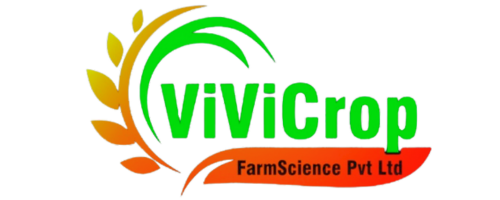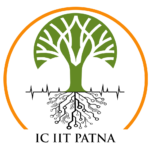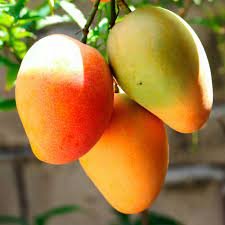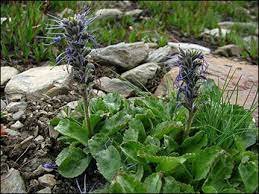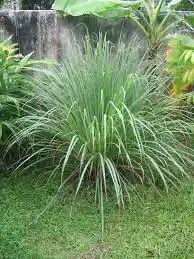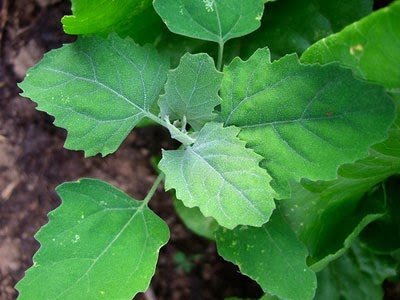Cinnamon (Cinnamomum verum) Nutrition Requirements
Nutrition required by
at each stage of its life cycle.
SOIL PREPARATION
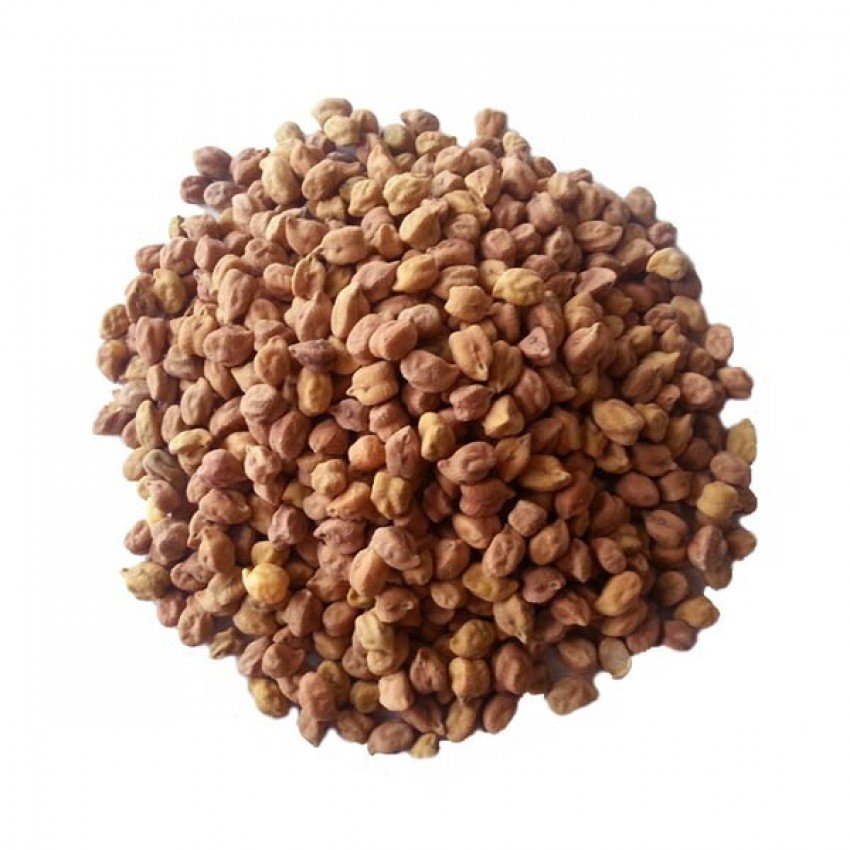
Soil Preparation
Soil preparation is crucial for successful cinnamon cultivation as it sets the foundation for healthy growth and optimum yield.
Here's a method for soil preparation and the nutrition requirements at the soil preparation stage for cinnamon (Cinnamomum verum):
**Soil Preparation Method:**
1. **Site Selection:**
Choose a well-drained location with fertile soil for cinnamon cultivation. Cinnamon prefers loamy, sandy loam, or red lateritic soils with a pH range of 5.5 to 6.5.
2. **Land Preparation:**
Prepare the land by plowing or tilling to a depth of about 30-40 cm to ensure proper soil aeration and root development. Remove any weeds, rocks, or debris from the field.
3. **Soil Testing:**
Conduct a soil test to assess the soil's nutrient content and pH level. Based on the soil test results, amend the soil with organic matter and necessary nutrients to optimize fertility.
4. **Incorporation of Organic Matter:**
Incorporate well-decomposed organic matter such as farmyard manure or compost into the soil during land preparation. This improves soil structure, fertility, and moisture retention capacity.
5. **Addition of Fertilizers:**
Based on the soil test recommendations and nutrient requirements of cinnamon, apply balanced fertilizers such as NPK (Nitrogen, Phosphorus, Potassium) fertilizers or organic fertilizers rich in nutrients like nitrogen, phosphorus, and potassium. The application rate may vary depending on soil fertility and plant requirements.
6. **Soil pH Adjustment:**
If the soil pH is outside the optimal range for cinnamon cultivation, amend the soil pH by adding agricultural lime to raise pH or elemental sulfur to lower pH, as necessary.
7. **Final Soil Preparation:**
After incorporating organic matter and fertilizers, perform final soil leveling and create raised beds or ridges for better drainage, especially in areas prone to waterlogging.
**Nutrition Requirement at Soil Preparation Stage:**
During the soil preparation stage for cinnamon cultivation, the focus is on providing the necessary nutrients to support initial root development and overall plant growth. Here are the key nutrient requirements:
1. **Nitrogen (N):**
Nitrogen is essential for vegetative growth and overall plant development. Apply nitrogen-rich fertilizers or organic sources of nitrogen to promote healthy shoot and root growth during the initial stages of cinnamon cultivation.
2. **Phosphorus (P):**
Phosphorus is vital for root development, flowering, and fruit formation. Incorporate phosphorus-containing fertilizers or organic materials to ensure adequate phosphorus availability for establishing cinnamon plants.
3. **Potassium (K):**
Potassium plays a crucial role in enhancing plant resistance to diseases and stress, as well as promoting overall plant vigor. Apply potassium-rich fertilizers or organic amendments to improve potassium levels in the soil.
4. **Organic Matter:**
Incorporating organic matter during soil preparation provides a slow-release source of nutrients, improves soil structure, enhances water retention, and promotes beneficial soil microbial activity, all of which are beneficial for cinnamon cultivation.
By following these soil preparation methods and providing the necessary nutrients, growers can create an optimal growing environment for cinnamon plants, leading to healthy growth and maximum yield potential. Regular soil testing and nutrient management practices throughout the cultivation cycle are essential for sustaining soil fertility and ensuring successful cinnamon production.
Early Growth (Germination to Establishment)

Early Growth
During the early growth stage (germination to establishment) of cinnamon plants, proper nutrition is crucial for healthy seedling development and establishment of strong roots.
Here are the key nutrient requirements for cinnamon plants during this stage:
1. **Nitrogen (N):**
Nitrogen is essential for promoting early growth and vegetative development in cinnamon plants. It plays a vital role in the formation of chlorophyll, which is necessary for photosynthesis and overall plant growth. Apply nitrogen-rich fertilizers or organic sources of nitrogen to meet the initial nutrient demands of young cinnamon seedlings.
2. **Phosphorus (P):**
Phosphorus is critical for root development, energy transfer, and overall plant metabolism. Adequate phosphorus availability is essential during the early growth stage to support healthy root system establishment and enhance nutrient uptake. Incorporate phosphorus-containing fertilizers or organic materials to ensure sufficient phosphorus levels for young cinnamon plants.
3. **Potassium (K):**
Potassium is essential for regulating water uptake, improving drought tolerance, and enhancing overall plant vigor and disease resistance. Adequate potassium levels are crucial for supporting early growth and establishment of cinnamon seedlings. Apply potassium-rich fertilizers or organic sources of potassium to meet the needs of young cinnamon plants during this stage.
4. **Micronutrients:**
In addition to macronutrients (N, P, K), cinnamon plants also require essential micronutrients such as iron (Fe), zinc (Zn), manganese (Mn), copper (Cu), boron (B), and molybdenum (Mo) for proper growth and development. Ensure adequate micronutrient availability through soil amendments or foliar applications to prevent deficiencies and promote healthy seedling growth.
5. **pH Adjustment:**
Maintain the soil pH within the optimal range of 5.5 to 6.5 for cinnamon cultivation. Proper pH levels are essential for nutrient availability and uptake by young cinnamon plants during the early growth stage. Adjust soil pH as necessary using agricultural lime to raise pH or elemental sulfur to lower pH, ensuring optimal nutrient uptake and plant growth.
By providing the necessary nutrients and maintaining optimal soil conditions, growers can support healthy seedling development and establishment of cinnamon plants during the early growth stage. Regular monitoring of plant growth and nutrient levels, along with appropriate nutrient management practices, are essential for ensuring successful cinnamon cultivation from germination to establishment.
Tillering Stage (Shoot Development)

Tillering Stage
During the tillering stage, also known as shoot development, cinnamon plants require specific nutrients to support robust growth and the development of healthy shoots.
Here are the key nutrition requirements for cinnamon plants during this stage:
1. **Nitrogen (N):**
Nitrogen is crucial for promoting vigorous shoot growth and overall vegetative development during the tillering stage. It plays a vital role in the formation of chlorophyll and protein synthesis, which are essential for photosynthesis and cellular growth. Apply nitrogen-rich fertilizers or organic sources of nitrogen to meet the increased demand for this nutrient during shoot development.
2. **Phosphorus (P):**
Phosphorus is essential for stimulating root growth, flower initiation, and overall plant metabolism. Adequate phosphorus availability is crucial during the tillering stage to support robust shoot development and enhance nutrient uptake efficiency. Incorporate phosphorus-containing fertilizers or organic materials to ensure sufficient phosphorus levels for cinnamon plants during this growth phase.
3. **Potassium (K):**
Potassium plays a vital role in regulating water uptake, improving drought tolerance, and enhancing overall plant vigor and disease resistance. Adequate potassium levels are necessary during the tillering stage to support healthy shoot growth and strengthen plant structure. Apply potassium-rich fertilizers or organic sources of potassium to meet the increased demand for this nutrient during shoot development.
4. **Micronutrients:**
Cinnamon plants also require essential micronutrients such as iron (Fe), zinc (Zn), manganese (Mn), copper (Cu), boron (B), and molybdenum (Mo) during the tillering stage. These micronutrients play critical roles in various physiological processes, including enzyme activation, photosynthesis, and nutrient uptake. Ensure adequate micronutrient availability through soil amendments or foliar applications to prevent deficiencies and promote robust shoot development.
5. **Calcium (Ca) and Magnesium (Mg):**
Calcium and magnesium are essential secondary nutrients that contribute to cell wall structure, enzyme activation, and overall plant health. Ensure sufficient calcium and magnesium levels in the soil through the application of lime (calcium carbonate) and magnesium-containing fertilizers to support healthy shoot development and structural integrity in cinnamon plants.
6. **pH Adjustment:**
Maintain the soil pH within the optimal range of 5.5 to 6.5 for cinnamon cultivation during the tillering stage. Proper pH levels are crucial for nutrient availability and uptake by developing shoots. Adjust soil pH as necessary using agricultural lime to raise pH or elemental sulfur to lower pH, ensuring optimal nutrient uptake and plant growth.
By providing the necessary nutrients and maintaining optimal soil conditions, growers can support vigorous shoot development and overall plant health during the tillering stage of cinnamon cultivation. Regular monitoring of plant growth and nutrient levels, along with appropriate nutrient management practices, are essential for ensuring successful cinnamon production.
Flowering

Flowering
During the flowering stage of cinnamon plants, proper nutrition is essential to support healthy flower development, pollination, and fruit set.
Here are the key nutritional requirements for cinnamon plants during this stage:
1. **Nitrogen (N):**
Nitrogen is crucial for promoting lush foliage growth and vigorous flower development during the flowering stage of cinnamon plants. Adequate nitrogen levels in the soil or through fertilization support the production of healthy flowers and enhance overall plant vigor.
2. **Phosphorus (P):**
Phosphorus plays a vital role in flower development, pollination, and fruit formation in cinnamon plants. Adequate phosphorus levels in the soil or through fertilization support the production of robust flowers, facilitate pollen formation, and enhance fruit set during the flowering stage.
3. **Potassium (K):**
Potassium is essential for flower and fruit development, water regulation, and overall plant vigor in cinnamon plants. During the flowering stage, potassium contributes to healthy flower formation, improves pollen quality, and enhances fruit set.
4. **Calcium (Ca):**
Calcium is important for cell wall formation, flower structure, and fruit development in cinnamon plants. Adequate calcium levels in the soil or through fertilization help prevent disorders such as blossom end rot and ensure healthy flower and fruit development during the flowering stage.
5. **Magnesium (Mg):**
Magnesium is involved in chlorophyll synthesis, energy transfer, and enzyme activation in cinnamon plants. During the flowering stage, magnesium contributes to overall plant health, enhances flower color and quality, and supports fruit development.
6. **Sulfur (S):**
Sulfur is essential for protein synthesis, enzyme activation, and overall plant metabolism in cinnamon plants. Adequate sulfur levels in the soil or through fertilization support healthy flower development, pollen formation, and fruit set during the flowering stage.
7. **Micronutrients:**
In addition to macronutrients, cinnamon plants also require essential micronutrients such as iron (Fe), zinc (Zn), manganese (Mn), copper (Cu), boron (B), and molybdenum (Mo) during the flowering stage. These micronutrients are involved in various metabolic processes, enzyme activation, and overall plant health, contributing to healthy flower and fruit development in cinnamon plants.
**Nutritional Management:**
- **Fertilization:**
Apply a balanced fertilizer with a higher ratio of phosphorus (P) and potassium (K) such as 10-30-20 or 15-15-30 during the flowering stage to support healthy flower and fruit development in cinnamon plants. The application rate may vary based on soil fertility levels and specific crop requirements, but generally, cinnamon plants benefit from a moderate to high level of phosphorus and potassium during this stage.
- **Foliar Feeding:**
Supplemental foliar applications of micronutrients such as iron, zinc, manganese, and boron may be beneficial during the flowering stage to address specific nutrient deficiencies and promote healthy flower development in cinnamon plants.
- **Soil Amendments:**
Incorporate organic matter such as compost, well-rotted manure, or leaf mulch into the soil during planting or as a top dressing to improve soil structure, enhance nutrient retention, and provide a slow-release source of nutrients for cinnamon plants during the flowering stage.
By meeting the nutritional requirements and providing optimal growing conditions during the flowering stage, you can promote healthy flower development, enhance pollination and fruit set, and maximize yield potential in cinnamon plants. Regular monitoring of plant health and nutrient levels is essential for adjusting fertilization practices and ensuring optimal growth throughout the flowering stage of cinnamon plant development.
Matchuration & Ripening

Matchuration & Ripening
During the maturation and ripening stage of cinnamon plants, proper nutrition is essential to support the development of mature cinnamon bark and maximize yield quality.
Here are the key nutritional requirements for cinnamon plants during this stage:
1. **Potassium (K):**
Potassium plays a crucial role in the development of mature cinnamon bark and the enhancement of its flavor, aroma, and essential oil content. Adequate potassium levels in the soil or through fertilization contribute to the accumulation of essential oils and aromatic compounds in cinnamon bark during the maturation and ripening stage.
2. **Phosphorus (P):**
Phosphorus is essential for the formation of sugars and carbohydrates, which contribute to the sweetness and flavor of mature cinnamon bark. Adequate phosphorus levels in the soil or through fertilization support the development of high-quality cinnamon bark during the maturation and ripening stage.
3. **Calcium (Ca):**
Calcium is important for cell wall strength and integrity, which is crucial for maintaining the firmness and quality of mature cinnamon bark. Adequate calcium levels in the soil or through fertilization help prevent disorders such as bark rot and ensure the proper development of cinnamon bark during the maturation and ripening stage.
4. **Magnesium (Mg):**
Magnesium is involved in chlorophyll synthesis and enzyme activation, which contribute to the overall health and quality of cinnamon bark. Adequate magnesium levels in the soil or through fertilization support the development of mature cinnamon bark with optimal color, flavor, and aroma.
5. **Sulfur (S):**
Sulfur is essential for the synthesis of sulfur-containing compounds, which contribute to the pungency and aroma of cinnamon bark. Adequate sulfur levels in the soil or through fertilization support the development of high-quality cinnamon bark with desirable flavor characteristics during the maturation and ripening stage.
6. **Micronutrients:**
In addition to macronutrients, cinnamon plants also require essential micronutrients such as iron (Fe), zinc (Zn), manganese (Mn), copper (Cu), boron (B), and molybdenum (Mo) during the maturation and ripening stage. These micronutrients are involved in various metabolic processes, enzyme activation, and overall plant health, contributing to the development of high-quality cinnamon bark with optimal flavor and aroma.
**Nutritional Management:**
- **Fertilization:**
Apply a balanced fertilizer with a higher ratio of potassium (K) such as 0-0-60 or 0-0-50 during the maturation and ripening stage to support the development of mature cinnamon bark with optimal flavor and aroma. The application rate may vary based on soil fertility levels and specific crop requirements, but generally, cinnamon plants benefit from a moderate to high level of potassium during this stage.
- **Foliar Feeding:**
Supplemental foliar applications of micronutrients such as iron, zinc, manganese, and boron may be beneficial during the maturation and ripening stage to address specific nutrient deficiencies and enhance the flavor and aroma of cinnamon bark.
- **Soil Amendments:**
Incorporate organic matter such as compost, well-rotted manure, or leaf mulch into the soil during planting or as a top dressing to improve soil structure, enhance nutrient retention, and provide a slow-release source of nutrients for cinnamon plants during the maturation and ripening stage.
By meeting the nutritional requirements and providing optimal growing conditions during the maturation and ripening stage, you can promote the development of high-quality cinnamon bark with optimal flavor, aroma, and yield potential. Regular monitoring of plant health and nutrient levels is essential for adjusting fertilization practices and ensuring optimal growth throughout the maturation and ripening stage of cinnamon plant development.
Harvesting

Harvesting
Cinnamon, derived from the inner bark of several tree species belonging to the genus Cinnamomum, is harvested primarily for its aromatic bark, which is used as a spice.
While cinnamon cultivation isn't as widespread as some other crops, it's important to understand its nutritional requirements and the procedures to be followed during the harvesting stage. Here's a general overview:
### Nutrition Requirement:
1. **Water:**
- Ensure the cinnamon trees receive adequate water throughout their growth cycle, including during the harvesting stage. However, avoid waterlogging, as excessive moisture can lead to root rot and other diseases.
2. **Nutrients:**
- Provide balanced nutrition to the cinnamon trees, including essential macro and micronutrients. Common fertilizers containing nitrogen, phosphorus, and potassium, as well as micronutrients like zinc and magnesium, can support healthy growth and enhance yield during the harvesting stage.
3. **pH Balance:**
- Maintain the soil pH between 5.5 and 6.5, as cinnamon trees prefer slightly acidic to neutral soil conditions. Conduct soil tests periodically to monitor pH levels and adjust as needed with appropriate soil amendments.
4. **Organic Matter:**
- Incorporate organic matter such as compost or well-decomposed manure into the soil before planting or as a top dressing during the growing season. Organic matter improves soil structure, fertility, and moisture retention, supporting overall tree health and productivity.
5. **Mulching:**
- Apply organic mulch around the base of cinnamon trees to conserve soil moisture, suppress weed growth, and provide a steady supply of nutrients as the mulch decomposes. Mulching also helps maintain stable soil temperatures, which is beneficial during the harvesting stage.
### Harvesting Procedure:
1. **Timing:**
- Cinnamon bark is typically harvested when the trees are at least two years old and have developed sufficiently thick bark. The best time to harvest cinnamon bark is usually during the dry season when the sap content is at its highest.
2. **Bark Harvesting:**
- Cinnamon bark is harvested by carefully removing strips of the inner bark from mature branches or shoots. Using a sharp knife or specialized tools, workers carefully peel away the outer bark and scrape off the inner bark in long strips.
3. **Processing:**
- After harvesting, the cinnamon bark strips are usually processed to extract the desirable cinnamon quills or sticks. The bark may be sun-dried or dried using artificial methods to reduce moisture content and enhance flavor and aroma.
4. **Packaging and Storage:**
- Once dried, the cinnamon quills are sorted, graded, and packaged for distribution and sale. Properly dried cinnamon quills should be stored in airtight containers in a cool, dark place to maintain their quality and flavor.
5. **Post-Harvest Care:**
- After harvesting, it's essential to provide post-harvest care to the cinnamon trees to promote regrowth and future harvests. This may include pruning, pest and disease management, and fertilization to support new growth.
By following these nutrition requirements and harvesting procedures, you can ensure a successful cinnamon harvest and maintain the health and productivity of your cinnamon trees for future seasons.
Cinnamon (Cinnamomum verum) Farming Economics
Get details of Profitability and cost estimate in growing
per acres of Land.
SOIL PREPARATION

Soil Preparation
Early Growth (Germination to Establishment)

Early Growth
Tillering Stage (Shoot Development)

Tillering Stage
Flowering

Flowering
Matchuration & Ripening

Matchuration & Ripening
Harvesting

Harvesting
Cinnamon (Cinnamomum verum) Disease Details
Nutrition required by
at each stage of its life cycle.
SOIL PREPARATION

Soil Preparation
During the soil preparation stage for cinnamon cultivation, various diseases and pests can affect the soil and subsequently impact the health of cinnamon plants.
Here are some common issues and precautions to prevent them:
1. **Soil-Borne Diseases:**
- **Fusarium wilt:**
A fungal disease that affects the roots and vascular system of cinnamon plants, leading to wilting and decline.
- **Root rot:**
Caused by various soil-borne fungi, root rot affects the root system of cinnamon plants, leading to stunted growth and yellowing of foliage.
**Precautions:**
- Ensure proper soil drainage to prevent waterlogging, which can create favorable conditions for soil-borne pathogens.
- Practice crop rotation to reduce the buildup of soil-borne pathogens.
- Use disease-free planting material and avoid planting cinnamon in areas with a history of soil-borne diseases.
2. **Soil Pests:**
- **Nematodes:**
Soil-dwelling pests that feed on cinnamon roots, causing stunted growth and reduced yield.
- **Cutworms, wireworms:**
Soil-dwelling insect pests that can damage cinnamon seedlings by feeding on roots and stems.
**Precautions:**
- Conduct soil tests to assess nematode populations and implement appropriate management strategies if necessary, such as soil solarization or biofumigation.
- Use nematode-resistant cinnamon varieties when available.
- Practice clean cultivation to reduce habitats for soil-dwelling pests.
3. **Weed Competition:**
- Weed competition can compete with cinnamon plants for nutrients, water, and light, leading to reduced growth and yield.
**Precautions:**
- Remove weeds manually or through mechanical means before planting cinnamon.
- Mulch the soil to suppress weed growth and conserve soil moisture.
4. **Soil pH Imbalance:**
- Extreme soil pH levels can affect nutrient availability and uptake, leading to nutrient deficiencies or toxicities in cinnamon plants.
**Precautions:**
- Conduct a soil test to determine the pH level of the soil and amend it accordingly to achieve the optimal pH range (5.5 to 6.5) for cinnamon cultivation.
- Incorporate lime to raise pH or sulfur to lower pH as needed.
5. **Poor Soil Fertility:**
- Inadequate soil fertility can result in nutrient deficiencies, impacting the growth and development of cinnamon plants.
**Precautions:**
- Conduct a soil test to assess nutrient levels and apply fertilizers based on the test results to ensure optimal soil fertility for cinnamon cultivation.
- Incorporate organic matter such as compost or well-rotted manure to improve soil fertility and structure.
By implementing these precautions and management practices during the soil preparation stage, you can minimize the risk of diseases and pests affecting cinnamon plants and promote their healthy growth and development. Regular monitoring of soil health and pest populations is essential throughout the growing season to address any emerging issues promptly.
Early Growth (Germination to Establishment)

Early Growing
During the early growth stage (germination to establishment) of cinnamon plants, several diseases and pests can affect their health and establishment.
Here are some common issues and precautions to prevent them:
1. **Damping-off:**
- Damping-off is a fungal disease that affects seedlings, causing them to collapse at the soil level. It is often caused by soil-borne pathogens like Pythium and Rhizoctonia.
**Precautions:**
- Start with disease-free seeds or seedlings from reputable sources.
- Use well-draining soil or potting mix to avoid waterlogged conditions.
- Maintain proper air circulation and avoid overcrowding seedlings.
- Practice proper watering techniques, avoiding excessive moisture in the growing medium.
2. **Seedling Diseases:**
- Various fungal and bacterial pathogens can cause seedling diseases, including seed rot, root rot, and leaf spot diseases.
**Precautions:**
- Use sterilized soil or potting mix for starting seeds or transplanting seedlings.
- Practice good sanitation by disinfecting pots, trays, and tools to prevent the spread of pathogens.
- Provide adequate air circulation and avoid overcrowding seedlings to reduce humidity levels.
3. **Pests:**
- Common pests during the early growth stage include aphids, thrips, and mites, which can damage young leaves and stems.
**Precautions:**
- Regularly inspect plants for signs of pest infestation.
- Use insecticidal soaps or neem oil as organic pest control methods.
- Introduce beneficial insects like ladybugs or lacewings to control pest populations naturally.
4. **Environmental Stress:**
- Environmental factors such as temperature fluctuations, excessive sunlight, or inadequate moisture can stress young cinnamon plants, making them more susceptible to diseases and pests.
**Precautions:**
- Provide adequate shade or protection from direct sunlight, especially during the hottest part of the day.
- Maintain consistent moisture levels in the growing medium, avoiding both waterlogging and drought stress.
- Monitor temperature and humidity levels to ensure optimal growing conditions for young cinnamon plants.
5. **Nutritional Deficiencies:**
- Nutritional deficiencies, such as nitrogen, phosphorus, or potassium, can affect the growth and development of young cinnamon plants, making them more vulnerable to diseases and pests.
**Precautions:**
- Conduct soil tests to assess nutrient levels and adjust fertilization accordingly.
- Use balanced fertilizers or organic amendments to provide essential nutrients for healthy plant growth.
- Monitor plant growth and symptoms of nutrient deficiencies, such as yellowing leaves or stunted growth, and address them promptly.
By implementing these precautions during the early growth stage of cinnamon plants, you can help prevent diseases and pests, promote healthy establishment, and ensure the successful growth of your cinnamon crop. Regular monitoring and proactive management are key to addressing any emerging issues promptly and maintaining the health and vigor of your cinnamon plants.
Tillering Stage (Shoot Development)

Tillering Stage
During the tillering stage (shoot development stage) of cinnamon plants, several diseases and pests can occur.
Here are some common ones along with precautions to prevent them:
1. **Leaf Spot Diseases**:
Leaf spots can be caused by various fungi and bacteria. They appear as small, circular lesions on the leaves. To prevent leaf spot diseases:
- Practice crop rotation to prevent the buildup of pathogens in the soil.
- Ensure proper spacing between plants to improve air circulation and reduce humidity.
- Avoid overhead irrigation to minimize moisture on foliage.
- Apply fungicides as a preventive measure, following manufacturer's recommendations.
2. **Powdery Mildew**:
Powdery mildew is a fungal disease characterized by white powdery growth on leaves, shoots, and flowers. To prevent powdery mildew:
- Plant resistant varieties if available.
- Prune plants to improve air circulation.
- Avoid overhead watering and irrigate at the base of plants.
- Apply fungicides as a preventive measure.
3. **Anthracnose**:
Anthracnose is a fungal disease that causes dark lesions on leaves, stems, and fruits. To prevent anthracnose:
- Remove and destroy infected plant parts to prevent the spread of the disease.
- Apply fungicides preventively during periods of high humidity and rainfall.
4. **Root Rot**:
Root rot is caused by various fungi and can lead to stunted growth and wilting of plants. To prevent root rot:
- Ensure well-drained soil and avoid waterlogging.
- Practice crop rotation to reduce the buildup of pathogens in the soil.
- Avoid over-fertilization, especially with nitrogen-rich fertilizers.
5. **Pests**:
Common pests that can affect cinnamon plants include aphids, scales, and mealybugs. To prevent pest infestations:
- Monitor plants regularly for signs of pest activity.
- Introduce natural predators such as ladybugs and lacewings to control aphids.
- Use horticultural oils or insecticidal soaps to control soft-bodied pests like scales and mealybugs.
- Avoid overuse of broad-spectrum insecticides that can harm beneficial insects.
Overall, maintaining good cultural practices such as proper sanitation, adequate spacing, and timely irrigation can help prevent the occurrence of diseases and pests in cinnamon plants during the tillering stage. Regular monitoring and prompt action at the first sign of problems are essential for effective management.
Flowering

Flowering
During the flowering stage of cinnamon plants, they may be susceptible to various diseases and pests.
Here are some common issues and precautions to prevent them:
1. **Cinnamon Bark Borers (Conopomorpha spp.) and Shoot Borers**:
These are insect pests that bore into shoots and stems, causing damage. To prevent borer infestations:
- Prune and remove infested plant parts promptly.
- Apply insecticides or biological control agents if infestations are severe.
- Use pheromone traps to monitor and control borer populations.
2. **Scale Insects and Mealybugs**:
These sap-sucking pests can affect the leaves and stems of cinnamon plants. To prevent scale and mealybug infestations:
- Inspect plants regularly for the presence of scales and mealybugs.
- Use beneficial insects like ladybugs and parasitic wasps for biological control.
- Apply insecticidal soaps or neem oil as a natural remedy.
3. **Leaf Spot Diseases**:
Diseases like anthracnose and other fungal infections can affect leaves during the flowering stage. Precautions include:
- Proper spacing and pruning to improve air circulation.
- Regular application of fungicides, especially during periods of high humidity.
- Removal and disposal of infected plant material.
4. **Powdery Mildew**:
Powdery mildew can also occur during the flowering stage. Preventive measures include:
- Adequate spacing and pruning for good air circulation.
- Regular monitoring for early signs of powdery mildew.
- Application of fungicides as a preventive measure.
5. **Botrytis Cinerea (Gray Mold)**:
This fungus can cause flower and bud rot. Precautions include:
- Avoid overhead irrigation to minimize moisture on flowers.
- Ensure proper spacing and ventilation to reduce humidity.
- Remove and destroy infected plant material.
6. **Cinnamon Leaf Blight**:
This bacterial disease affects the leaves and can lead to defoliation. Precautions include:
- Regular inspection and removal of infected leaves.
- Copper-based fungicides can be applied preventively.
- Avoiding overhead irrigation to reduce leaf wetness.
7. **Environmental Stress**:
Stress factors such as waterlogging, drought, or extreme temperatures can make plants more susceptible to diseases. Ensure proper irrigation and protect plants from adverse environmental conditions.
It's essential to maintain good cultural practices throughout the entire growing season, including proper sanitation, regular monitoring, and timely interventions. Integrated Pest Management (IPM) practices that combine biological, cultural, and chemical control methods can help manage pests and diseases effectively while minimizing environmental impact.
Matchuration & Ripening

Matchuration & Ripening
During the maturation and ripening stages of cinnamon plants, they may be susceptible to several diseases and pests.
Here are some common issues and precautions to prevent them:
1. **Cinnamon Bark Borers (Conopomorpha spp.) and Shoot Borers**:
These insect pests can bore into shoots, stems, and bark, causing damage to the plant. To prevent borer infestations:
- Prune and remove infested plant parts promptly.
- Apply insecticides or biological control agents if infestations are severe.
- Use pheromone traps to monitor and control borer populations.
2. **Scale Insects and Mealybugs**:
These sap-sucking pests can affect the bark and foliage of cinnamon plants. To prevent scale and mealybug infestations:
- Inspect plants regularly for the presence of scales and mealybugs.
- Use beneficial insects like ladybugs and parasitic wasps for biological control.
- Apply insecticidal soaps or neem oil as a natural remedy.
3. **Anthracnose and Other Fungal Diseases**:
Fungal diseases like anthracnose can affect the bark and leaves of cinnamon plants, leading to cankers and defoliation. Precautions include:
- Proper pruning and sanitation practices to remove infected plant material.
- Application of fungicides preventively, especially during periods of high humidity.
- Ensuring proper air circulation and spacing between plants to reduce humidity and prevent fungal growth.
4. **Cinnamon Leaf Blight**:
This bacterial disease affects the leaves and can lead to defoliation. Precautions include:
- Regular inspection and removal of infected leaves.
- Copper-based fungicides can be applied preventively.
- Avoiding overhead irrigation to reduce leaf wetness.
5. **Botrytis Cinerea (Gray Mold)**:
This fungus can cause rot in mature cinnamon bark and fruits. Precautions include:
- Proper pruning to improve air circulation and reduce humidity.
- Removing and destroying infected plant material promptly.
- Application of fungicides as a preventive measure.
6. **Environmental Stress**:
Stress factors such as waterlogging, drought, or extreme temperatures can make plants more susceptible to diseases. Ensure proper irrigation and protect plants from adverse environmental conditions.
7. **Harvesting Practices**:
Proper harvesting techniques can help minimize damage to the bark and reduce the risk of diseases. Use sharp tools and avoid excessive damage to the bark during harvesting.
Implementing integrated pest management (IPM) practices that combine cultural, biological, and chemical control methods can help manage pests and diseases effectively while minimizing environmental impact. Regular monitoring and timely interventions are crucial for preventing and managing diseases and pests in cinnamon plants during the maturation and ripening stages.
Harvesting

Harvesting
During the harvesting stage of cinnamon plants, several diseases and pests can affect the quality of the harvested bark.
Here are some common issues and precautions to prevent them:
1. **Cinnamon Bark Borers (Conopomorpha spp.) and Shoot Borers**:
These insect pests can bore into the bark, causing damage and reducing the quality of the harvested cinnamon. Precautions include:
- Harvesting bark from healthy plants only.
- Pruning and removing infested plant parts before harvesting.
- Inspecting harvested bark for signs of borer damage and discarding affected portions.
2. **Anthracnose and Other Fungal Diseases**:
Fungal diseases can affect the bark of cinnamon plants, leading to discoloration, rot, and reduced quality. Precautions include:
- Harvesting bark during dry weather to minimize fungal infection.
- Proper sanitation practices to remove infected plant material before harvesting.
- Inspecting harvested bark for signs of fungal infection and discarding affected portions.
3. **Cinnamon Leaf Blight**:
This bacterial disease affects the leaves but can also affect the bark if left untreated. Precautions include:
- Applying appropriate bactericides preventively during the growing season to control leaf blight.
- Pruning and removing infected plant parts before harvesting to prevent the spread of the disease to the bark.
4. **Environmental Stress**:
Stress factors such as waterlogging, drought, or extreme temperatures can weaken cinnamon plants, making them more susceptible to diseases. Precautions include:
- Proper irrigation and soil drainage to prevent waterlogging or drought stress.
- Protecting plants from extreme temperatures and environmental conditions that can cause stress.
5. **Harvesting Techniques**:
Improper harvesting techniques can damage the bark and increase the risk of diseases and pests. Precautions include:
- Using sharp tools and proper cutting techniques to minimize damage to the bark.
- Harvesting bark from mature branches only, avoiding young shoots or branches that are still actively growing.
Implementing these precautions during the harvesting stage can help minimize the risk of diseases and pests affecting the quality of harvested cinnamon bark. Regular monitoring and proper management practices throughout the growing season are also essential for maintaining plant health and reducing the risk of infestations.
